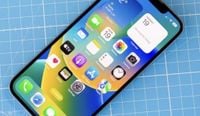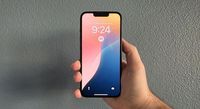Apple's much-anticipated iPhone 16e, touted as a budget-friendly option, is drawing considerable scrutiny as consumer sentiments suggest it may actually be overpriced. A recent survey conducted by SellCell, involving over 3,500 Apple users, revealed that a staggering 90% of respondents feel the iPhone 16e is too expensive given its feature set.
Initially released at $599 (or equivalent pricing in other currencies), the iPhone 16e represented a significant price increase from its predecessor, the iPhone SE, which launched in 2022 for $429. Many anticipated the new model to be priced around $500, aligning with its budget-friendly marketing. However, it appears Apple has misunderstood consumer expectations, positioning the phone at a base price that many now find unacceptable.
According to the SellCell survey, the most notable findings include that 72.7% of respondents believe the iPhone 16e should have an entry price of $500. Beyond this, dissatisfaction is palpable among consumers, with over 70% expressing disinterest in the phone overall. Reasons provided include the availability of only a single camera (which more than 50% of users indicated would deter them from purchasing) and the fact that 34% would prefer investing in a higher-end iPhone instead. Further complaints include a notable 16.1% of participants expressing disappointment in the iPhone's lack of MagSafe support.
This dissatisfaction is echoed when looking at the phone's specifications. Equipped with an A18 chip and 8GB of RAM, the iPhone 16e does have strong internals; however, its single-camera setup and 60Hz display give it a feel that many consider outdated when compared to competitors.
While the iPhone 16e's pricing appears daunting, Apple's primary competitors are launching equally compelling models at lower prices, raising questions about the iPhone 16e's value proposition. Products like the Google Pixel 8a and the Nothing Phone 3a Pro both boast lower starting prices, with the Pixel 8a at $499 and the Nothing Phone 3a Pro at $459, while offering comparable if not superior specifications.
In a latest turn, following the launch of Google's new Pixel 9a, Apple has moved to reduce the iPhone 16e's price by ₹8,000, bringing it down to ₹52,000 in India. This price cut comes from Apple authorized resellers like iNvent, Croma, Blinkit, and Zepto. The initial listed price prior to this discount was set at ₹59,900 with the reduction now leaving room for competitive pricing ahead of further consumer introspection. Further savings can be made with bank offers, which could drop the price as low as ₹51,900.
Given that the Pixel 9a is launching with strong specifications at a price lower than the iPhone 16e, comparison becomes inevitable. The Pixel 9a features a 6.3-inch OLED display with an adaptive refresh rate and a more versatile camera system with both a primary and an ultrawide lens. In contrast, the iPhone 16e offers a 6.1-inch Super Retina XDR display with a static refresh rate, highlighting potential shortcomings in Apple’s product against appealing alternatives.
Ultimately, the iPhone 16e, while positioned as a mid-range offering, may not sufficiently deliver on value as per consumer expectations. While Apple undoubtedly continues to create quality devices, the current pricing strategy may require reevaluation to align with user sentiments. Perhaps for those looking for entry-level access to Apple’s ecosystem, considering other models might present better value over the iPhone 16e.
As anticipation swells for both the iPhone 16 and the newly discounted iPhone 16e, the market will be closely watching to see how Apple navigates this critical period. Can the tech giant adapt swiftly enough to retain consumer interest while also competing with aggressive pricing from its rivals?
The outlook for the iPhone 16e remains mixed as consumers weigh their options amidst a competitive smartphone landscape.






